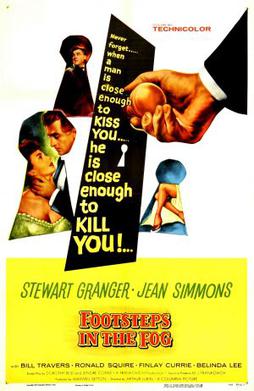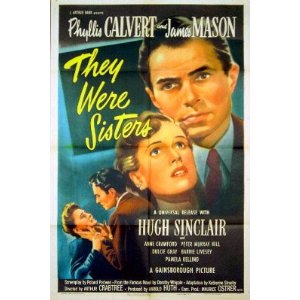
Lord Peter Death Bredon Wimsey is the fictional protagonist in a series of detective novels and short stories by Dorothy L. Sayers. A dilettante who solves mysteries for his own amusement, Wimsey is an archetype for the British gentleman detective. He is often assisted by his valet and former batman, Mervyn Bunter; by his good friend and later brother-in-law, police detective Charles Parker; and, in a few books, by Harriet Vane, who becomes his wife.

Athene Seyler, CBE was an English actress.

Tarzan Escapes is a 1936 Tarzan film based on the character created by Edgar Rice Burroughs. It was the third in the Metro-Goldwyn-Mayer Tarzan series to feature Johnny Weissmuller as the "King of the Apes". Previous films were Tarzan the Ape Man (1932) and Tarzan and His Mate (1934), with Jane's bikini-like attire and the famous skinny-dipping sequence. Weissmuller and O'Sullivan starred together in three more Tarzan films, Tarzan Finds a Son! (1939), Tarzan's Secret Treasure (1941) and Tarzan's New York Adventure (1942).

Carry On Spying is a 1964 British spy comedy film directed by Gerald Thomas. It is the ninth in the series of 31 Carry On films (1958–1992).

High Treason is a 1929 film based on a play by Noel Pemberton Billing. It was directed by Maurice Elvey, and stars James Carew, Humberstone Wright, Benita Hume, Henry Vibart, Hayford Hobbs, Irene Rooke, and Jameson Thomas. Raymond Massey makes his first screen appearance in a small role. The film was initially produced as a silent but mid-way during production, Elvey was pushed by the studio to add sound to the film in order to cash in on the talkies. Although a third of the film was filmed in sound, Elvey maintained much of the silent footage and dubbed over the dialogue for shots that were originally silent, with Elvey himself voicing some of the minor characters, which he admitted when interviewed by the Manitoba Free Press shortly after the film was released in the US. Likewise, BIP's Blackmail, directed by Alfred Hitchcock was also turned into a sound picture mid-way during production and many of the silent scenes used dubbed dialogue and sound effects in a similar fashion to High Treason.

Franklin Bryant Washburn III was an American film actor who appeared in more than 370 films between 1911 and 1947. Washburn's parents were Franklin Bryant Washburn II and Metha Catherine Johnson Washburn. He attended Lake View High School in Chicago.
Maurice Elvey was one of the most prolific film directors in British history. He directed nearly 200 films between 1913 and 1957. During the silent film era he directed as many as twenty films per year. He also produced more than fifty films – his own as well as films directed by others.

Benita Hume was an English theatre and film actress. She appeared in more than 40 films from 1925 to 1955.

Footsteps in the Fog is a 1955 British Technicolor Victorian-era crime thriller starring Stewart Granger and Jean Simmons, with a screenplay co-written by Lenore Coffee and Dorothy Davenport, and released by Columbia Pictures. Directed by Arthur Lubin, the film is based on the W. W. Jacobs short story "The Interruption".
Max Parker was an American art director. He was nominated for an Academy Award in the category Best Art Direction for the film George Washington Slept Here. He worked on 86 films between 1916 and 1947. He was born in Prescott, Arizona, and died in Torrance, California.

Gambling Ship is a 1933 American pre-Code drama film directed by Louis J. Gasnier and Max Marcin, and starring Cary Grant and Benita Hume. It was based on Paul Cain's short stories: "Fast One", "Lead Party", "Velvet" and "The Heat", which were published in Black Mask magazine. It was released on June 23, 1933. Ace Corbin retires from the racket as a gambling boss, but the enemies attempt to stop him.

Sally in Our Alley is a 1931 British romantic comedy drama film directed by Maurice Elvey and starring Gracie Fields, Ian Hunter, and Florence Desmond. It is based on the 1923 West End play The Likes of Her by Charles McEvoy.

Harold Huth was a British actor, film director and producer.

Balaclava is a 1928 British silent and sound war film directed by Maurice Elvey and Milton Rosmer and starring Cyril McLaglen, Benita Hume, Alf Goddard, Harold Huth, and Wally Patch. It was made by Gainsborough Pictures with David Lean working as a production assistant. The charge sequences were filmed on the Long Valley in Aldershot in Hampshire. Although the sound version had no audible dialogue, it featured a synchronized musical score with sound effects. The sound version was released in the United States under the title Jaws Of Hell.

They Were Sisters is a 1945 British melodrama film directed by Arthur Crabtree for Gainsborough Pictures and starring Phyllis Calvert and James Mason. The film was produced by Harold Huth, with cinematography from Jack Cox and screenplay by Roland Pertwee. They Were Sisters is noted for its frank, unsparing depiction of marital abuse at a time when the subject was rarely discussed openly. It was one of the Gainsborough melodramas.
The Little Damozel is a 1933 British romance film directed by Herbert Wilcox and starring Anna Neagle, James Rennie and Benita Hume. It is based on the 1908 play by Monckton Hoffe, previously filmed in 1916. The screenplay concerns a captain who pays one of his sailors to marry a woman who works in a nightclub. Dresses for the film were designed by Doris Zinkeisen.

Discord is a 1933 British drama film directed by Henry Edwards and starring Owen Nares, Benita Hume and Harold Huth. Its plot involves a struggling composer who has to be supported financially by his wealthier wife. It was based on the play A Roof and Four Walls by E. Temple Thurston. It was made at British and Dominion Elstree Studios for release by Paramount Pictures.
The Happy Ending is a 1931 British drama film directed by Millard Webb and starring George Barraud, Daphne Courtney and Alfred Drayton. Its plot concerns a father who deserted his family some years before returning home only to find his wife has told his children and neighbours that he died as a hero when he abandoned them. A silent version, of The Happy Ending had been made in 1925 based on the same play by Ian Hay. It was made at Lime Grove Studios. The film's sets were designed by Andrew Mazzei.
The Happy Ending is a 1925 British silent drama film directed by George A. Cooper and starring Fay Compton, Jack Buchanan and Joan Barry. It was based on a play by Ian Hay. Its plot concerns a father who deserted his family some years before returning home only to find his wife has told his children and neighbours that he died as a hero when he abandoned them. A sound film of the same play The Happy Ending was made in 1931.

Nicholas James "Beau" Hannen OBE (mil) was a British actor of the early and mid-20th century who acted in a number of stage plays and films.















